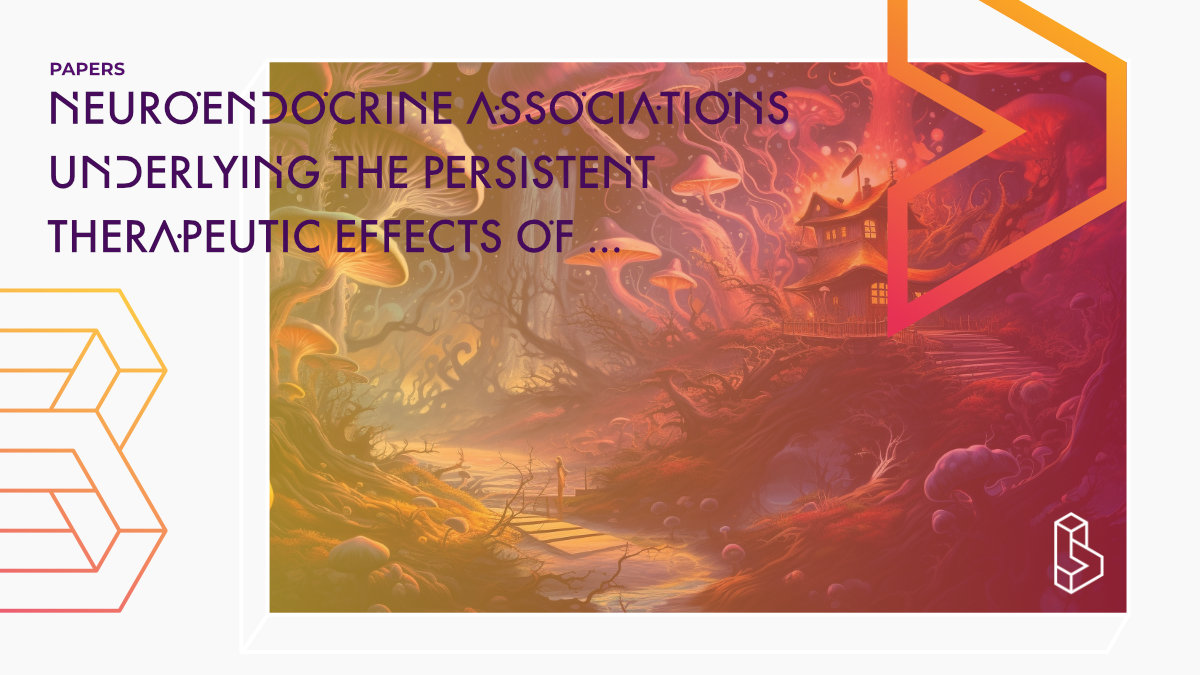This review (2018) proposes that psychedelics may exert their effectiveness on certain pathologies through the neuroendocrine system (hormone release due to stimulation of the nervous system).
Abstract of Neuroendocrine Associations Underlying the Persistent Therapeutic Effects of Classic Serotonergic Psychedelics
“Recent reports on the effects of psychedelic-assisted therapies for mood disorders and addiction, as well as the effects of psychedelics in the treatment of cluster headache, have demonstrated promising therapeutic results. In addition, the beneficial effects appear to persist well after limited exposure to the drugs, making them particularly appealing as treatments for chronic neuropsychiatric and headache disorders. Understanding the basis of the long-lasting effects, however, will be critical for the continued use and development of this drug class. Several mechanisms, including biological and psychological ones, have been suggested to explain the long-lasting effects of psychedelics. Actions on the neuroendocrine system are some such mechanisms that warrant further investigation in the study of persisting psychedelic effects. In this report, we review certain structural and functional neuroendocrinological pathologies associated with neuropsychiatric disorders and cluster headache. We then review the effects that psychedelic drugs have on those systems and provide preliminary support for potential long-term effects. The circadian biology of cluster headache is of particular relevance in this area. We also discuss methodologic considerations for future investigations of neuroendocrine system involvement in the therapeutic benefits of psychedelic drugs.”
Authors: Emmanuelle A. D. Schindler, Ryan M. Wallace, Jordan A. Sloshower & Deepak C. D’Souza
Summary of Neuroendocrine Associations Underlying the Persistent Therapeutic Effects of Classic Serotonergic Psychedelics
Psilocybin, LSD, and DMT are serotonergic psychedelic drugs that have been shown to treat depression, anxiety, obsessive-compulsive symptoms, alcohol and tobacco addictions, as well as enhance attitude, mood, and behaviour.
LSD has been shown to improve affect and sleep, reduce pain, and improve quality of life in patients with life-threatening disease, and reduce symptoms of panic and hopelessness. There are ongoing studies investigating the effects of psychedelics on depression, drug and alcohol addiction, and headache disorders. The neuroendocrine system may be involved in the persistence of therapeutic effects after limited exposure, and neuroplastic, genetic, and psychological processes may be involved.
Find this paper
https://doi.org/10.3389/fphar.2018.00177
Open Access | Google Scholar | Backup | 🕊
Cite this paper (APA)
Schindler, E. A., Wallace, R. M., Sloshower, J. A., & D’Souza, D. C. (2018). Neuroendocrine associations underlying the persistent therapeutic effects of classic serotonergic psychedelics. Frontiers in pharmacology, 9, 177.

